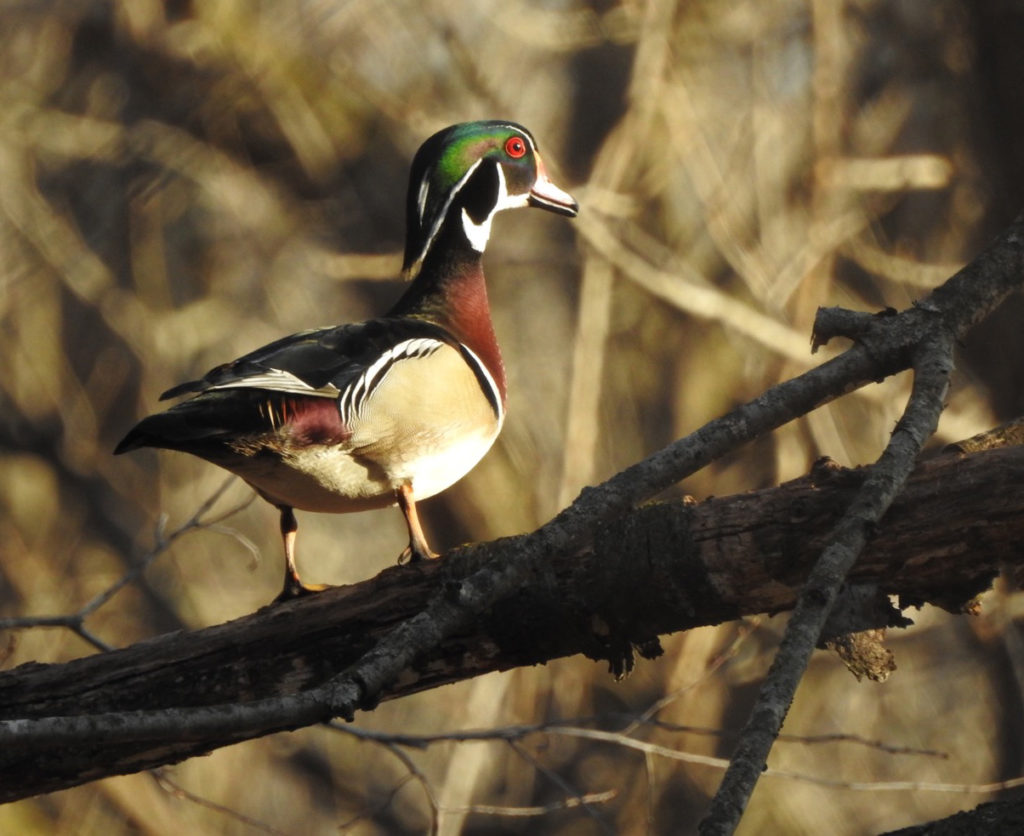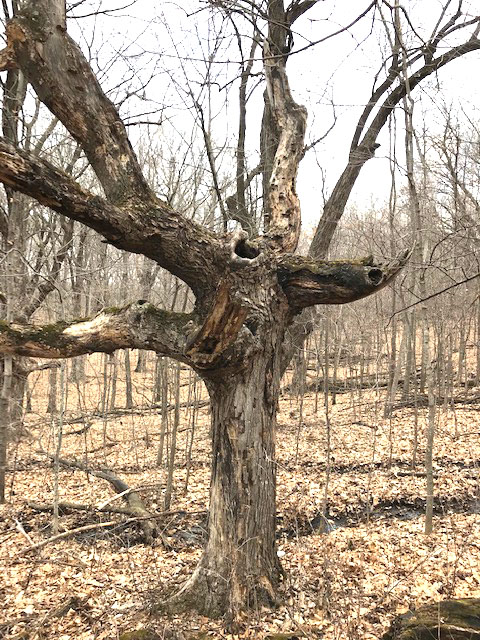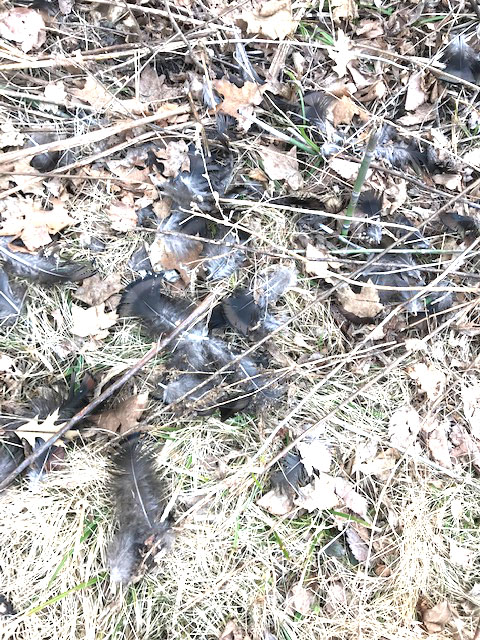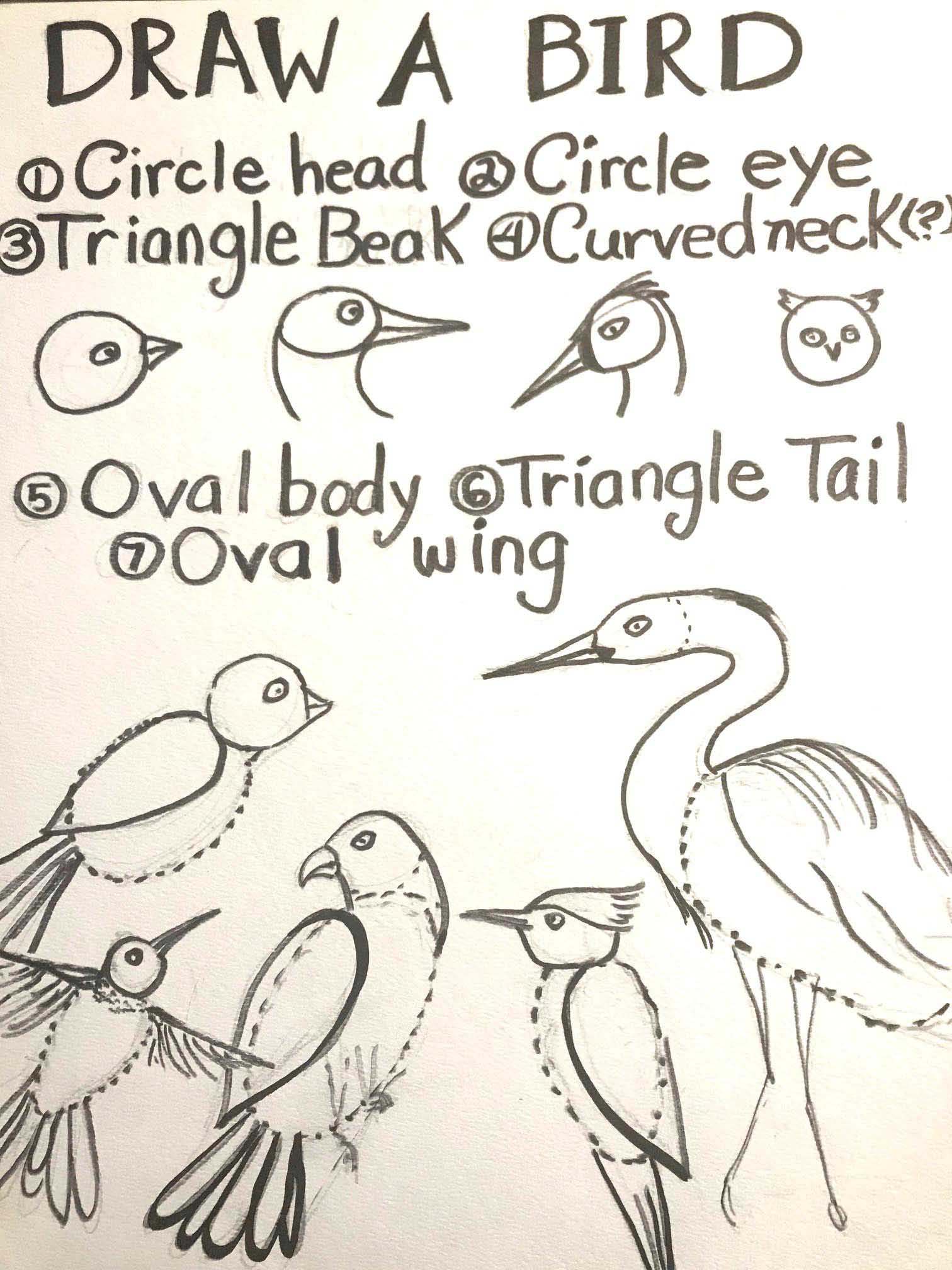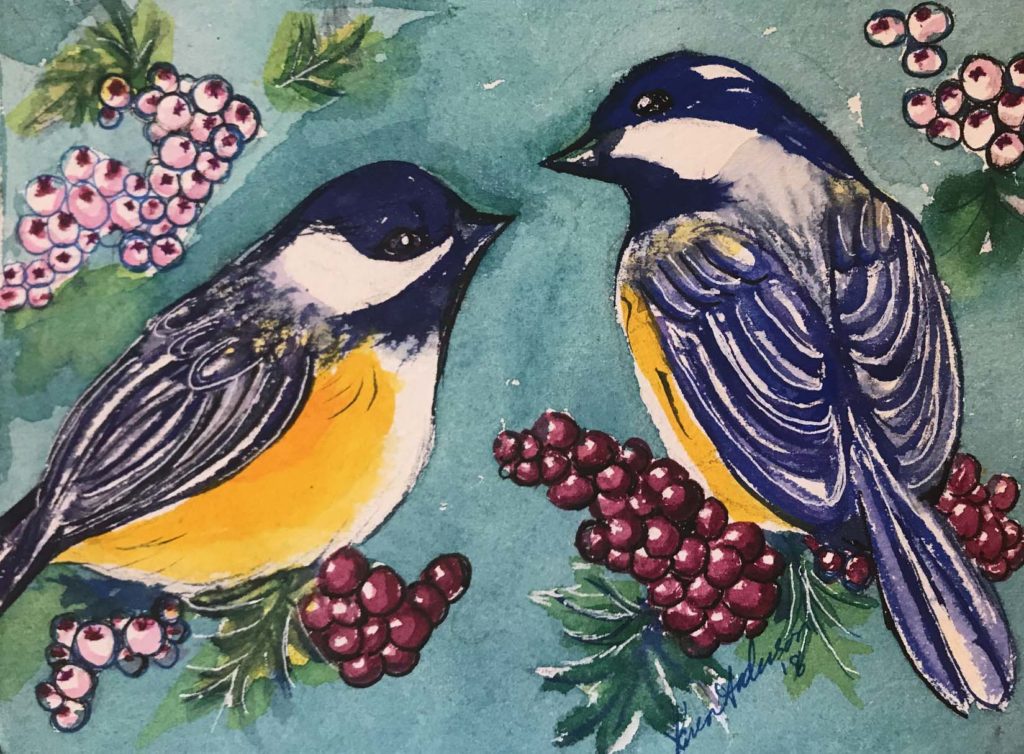This week in Nature School:
1. We will look for Signs of Spring.
2. Create a Spring Birds field guide and observation chart.
3. Get ready to do some nature writing.
4. Guest artist, Karen Anderson will teach you how to draw a bird.
Be sure to share a nature note, a photo, or something you experienced at the bottom of the post (Leave a comment at the bottom of the post).
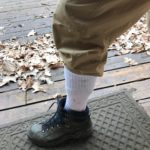
Safety Alert: With the warmer weather, ticks are active. Stay on walking paths/Do not walk on deer trails. You can wear shorts or pants. If you choose to wear pants pull your socks over the pant leg so if you can see tick crawling up your leg. Do frequent tick checks. At home, do a thorough tick check.
Many thanks to Janine Pung, Carol Wade, Stephen Bolles and Mark Storck for editing the draft of this week’s Nature School.
1. Signs and Sounds of Spring
1. Click here to see and hear a virtual slide program about the sounds of spring. In your nature notebook write down any birds that you hear during the week (especially in the morning).
2. Nature starts to come to life in early Spring. This week, see what you can find.
What to do: This week your tasks are to find as many signs of spring as you can. Then use your nature notebook and record your observations.
To download and print the page below: click here.
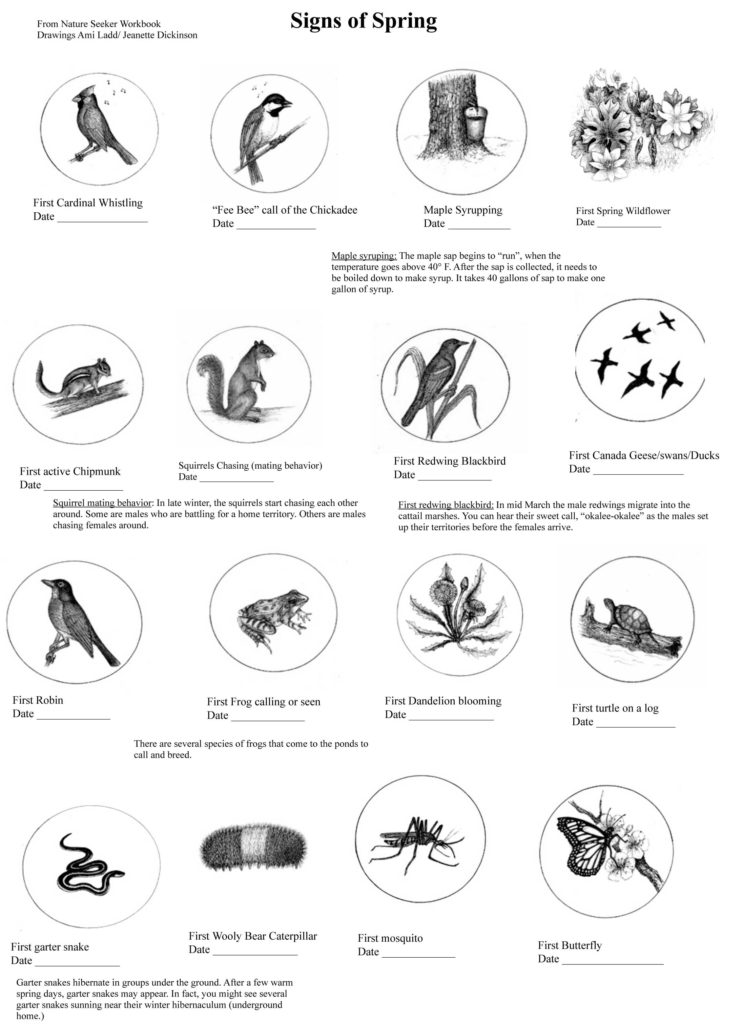
2. Spring Bird Identification
Spring is full of surprises, with new species of migratory birds arriving each week. There is nothing more beautiful than hearing the first spring call of a male grosbeak or oriole as it sings loudly from the trees.
What to Do:
a. Click here to see the virtual slide program on Spring Birds.
b. Download the Spring Birds Activity. Answer the questions using the text below. Click here for the PDF.
c. On your nature hikes be aware of birds calling and try to find them. Binoculars can help in identifying the birds.
d. Visit a wetland and look for ducks, herons, and other water birds.
e. Make a chart in your nature notebook that may look like this:
Birds I’ve Seen
Date Name of the bird Something I noticed about the bird
f. Color the two spring bird pages shown below using the color code on each the page. (line drawings by Jeanette Dickinson)
To download and print page 1: click here.
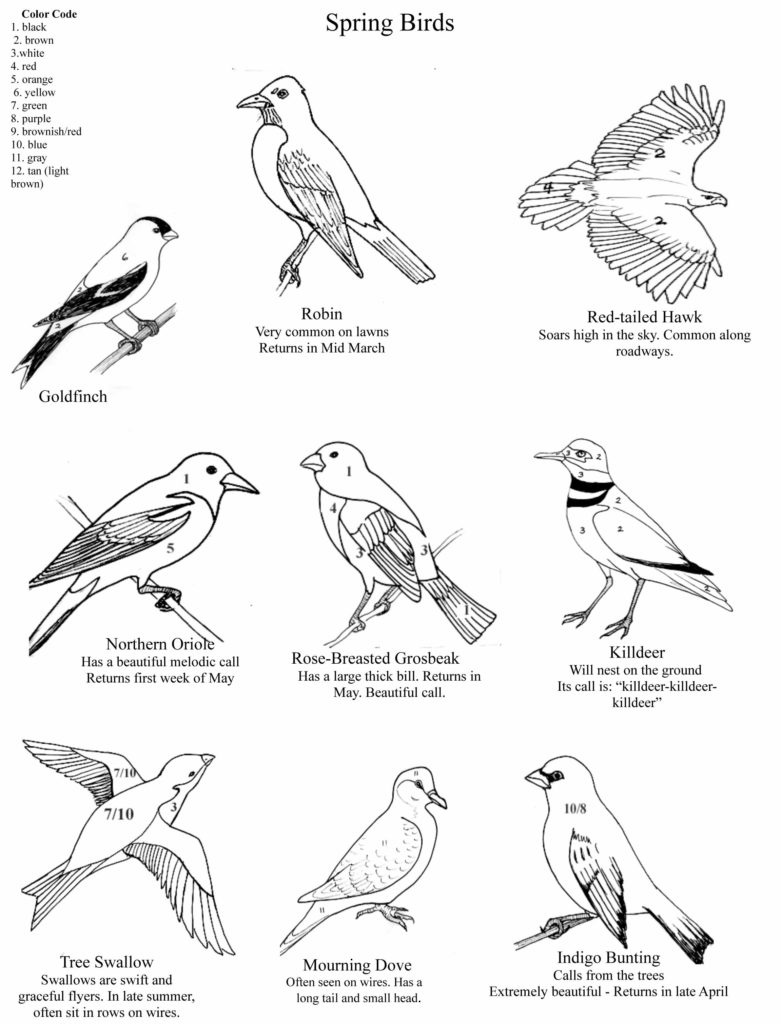
To download and print page 2 : click here.
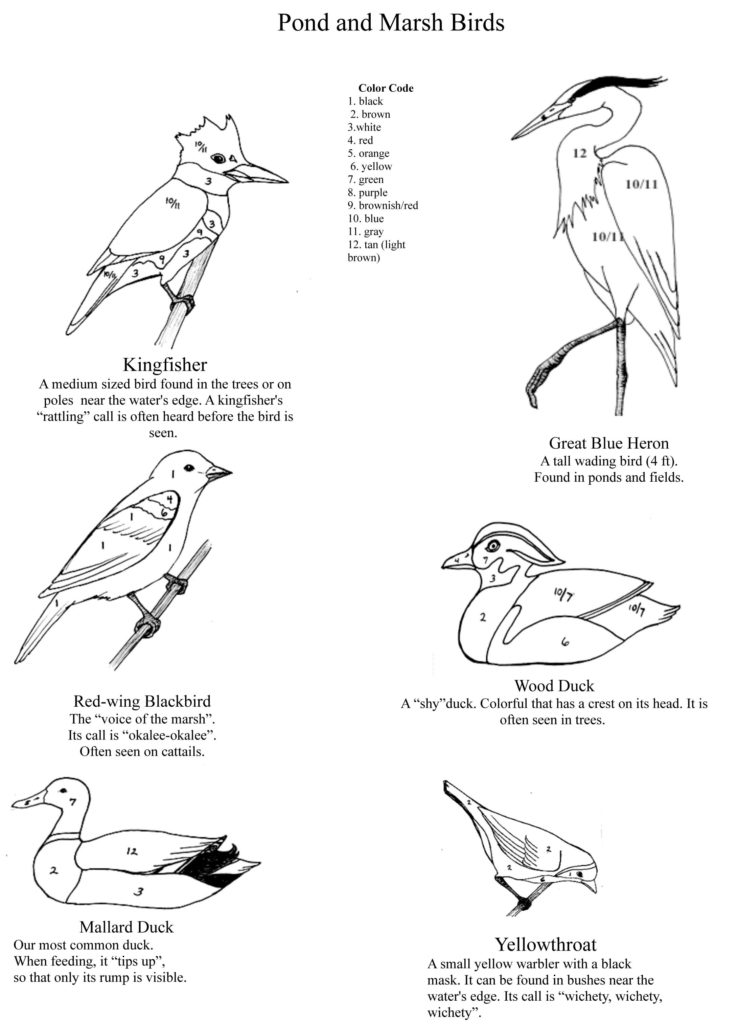 3. Nature Writing
3. Nature Writing
a. In your nature notebook write something about the following questions:
b. Does a tree still have a purpose in the forest when it is no longer alive? Explain.
c. On a trail deep into nature, you find over a hundred turkey feathers scattered on the ground.
What happened here?
4. Draw a Bird
This week, guest artist, Karen Anderson shows you some basic steps in drawing birds.
What to do:
a. Choose a bird from the Spring Birds handout.
b. Practice the basics of drawing your bird in your nature notebook, by using Karen’s handout, “Draw a Bird”.
d. The line drawings are called “field sketches” that naturalists use when they are in the “field.” Karen, who is an artist, has finished her line drawing with color (see the chickadee below). Color your bird sketch if you want to.
To download and print “Draw a Bird” (below): click here.


